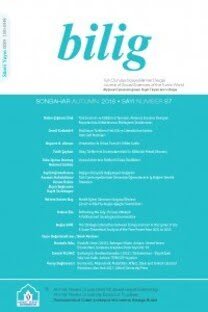Kavramsal Anahtar Modeli ile Metafor ve Deyim Öğretimi
Metafor, metonimi, benzetme gibi söz figürlerini ve deyim, atasözü gibi kalıplaşmış ifadeleri içine alan figüratif dil; yalnızca edebî dilin değil, günlük dilin de önemli bir unsurudur. Bu doğrultuda son yıllarda figüratif dil öğretimine ilişkin araştırmalar önemli bir artış göstermiştir. Bu çalışmada da Kavramsal Metafor Teorisi’ne dayalı olarak hazırlanan Kavramsal Anahtar Modeli aracılığıyla figüratif dil öğretimi konusu ele alınmaktadır. Çalışmanın amacı Kavramsal Anahtar Modeli’nin metafor ve deyim öğretimi konusundaki etkinliğini araş- tırmaktır. Uygulama, duygu metaforları ve deyimleri ile sınırlandırılmıştır. Son test kontrol gruplu desen doğrultusunda yürütülen çalışma, Belçika’nın Limburg Bölgesi’nde yaşayan 32 Türkçe-Flamanca iki dilli öğrenci ile sınırlıdır. Uygulama sonuçlarını değerlendirmek üzere araştırmacı tarafından Duygu Metaforlarını Hatırlama Testi, Duygu Deyimlerini Hatırlama Testi, Duygu Deyimlerini Yorumlama Testi, Mini Metin Bağlamında Duygu Deyimlerini Hatırlama Testi, Deyim Yorumlama Testi olmak üzere beş farklı ölçme aracı geliştirilmiştir. Ölçme araçları verilerinin ilişkisiz ölçümler t-testi ile analizinden elde edilen sonuçlar, deneysel çalışma neticesinde duygu alanıyla ilgili metafor ve deyimlerin hatırlanması ve yorumlanması konusunda gruplar arasında istatistiksel açıdan anlamlı bir farklılık bulunduğunu göstermiştir. Bu yönüyle Kavramsal Anahtar Modeli, metafor ve deyim öğretiminde etkili bir yöntem olarak ortaya çıkmaktadır.
Anahtar Kelimeler:
Figüratif dil öğretimi, metafor, deyim, Kavramsal Metafor Teorisi, Kavramsal Anahtar Modeli
Teaching Metaphors and Idioms Using Conceptual Key Model
Figurative language, which can be thought as a constitution of speech figures like metaphor, metonymy, and stereotypes like idioms and proverbs, is a fundamental element of both literary and daily language. Therefore, there has been a considerable increase in figurative language research. This study also deals with this subject focusing on teaching metaphor and idioms by means of the Conceptual Key Model which is based on the Conceptual Metaphor Theory. The scope of this study is to explore the efficiency of the Conceptual Key Model, particularly in metaphor and idiom teaching under the framework of emotion metaphors and idioms. The study was carried out in the province of Limburg in Belgium with 32 Turkish-Dutch bilingual pupils. The posttest experimental design was used. Data were collected using Emotion Metaphors Retention Test, Emotion Idioms Retention Test, Emotion Idioms Interpretation Test, Emotion Idioms Retention Test in the Context of Mini-Text, Idiom Interpretation Test. The independent samples t-test was used to describe the data. The following results were obtained from the study: There is statistically meaningful difference on account of both metaphor and idiom retention, and interpretation in the domain of emotions. And the Conceptual Key Model emerged an efficient method in figurative language teaching.
Keywords:
Teaching figurative language, metaphor, idiom, Conceptual Metaphor Theory, Conceptual Key Model,
___
Aksan, Doğan (1998a). Her Yönüyle Dil. Ankara: Türk Dil Kurumu Yayınları._____, (1998b). Türkçenin Gücü. İstanbul: Bilgi Yayınevi. Aksan, Mustafa (2006). “Metaphors of anger: an outline of a cultural model”. Mersin Üniversitesi Dil ve Edebiyat Dergisi, 3 (1), 31-59.
_____, (2006). “The container metaphor in Turkish expressions of anger”. Mersin Üniversitesi Dil ve Edebiyat Dergisi, 3 (2),103-124.
Baddeley, Alan (1990). Human memory. London: Lawrence Erlbaum Associates. Boers, Frank (2000a). “Enhancing metaphoric awareness in specialised reading”. English for Specific Purposes, 19 (2), 137-147.
_____, (2000b). “Metaphor Awareness and Vocabulary Retention”. Journal of Applied Linguistics , 21 (4), 553-571.
_____, (2004). “Expanding Learners’ Vocabulary Through Metaphor Awareness: What expansion, What Learners, What Vocabulary?” In M., Archard and S. Niemeier (Eds.), Cognitive linguistics, second language acquisition,and foreign language teaching (p. 211-232). Berlin: Mouten de Gruyter.
Charteris-Black, Jonathan (2000). “Figuration, lexis and cultural resonance: A corpus based study of Malay”. Pragmatics, 10, 281–300.
Çetinkaya, Bayram (2006). Türkiye Türkçesinde Mutluluk ve Üzüntü Göstergeleri, Yayımlanmamış Doktora Tezi, Gazi Üniversitesi Sosyal Bilimler Enstitüsü, Ankara.
Lakoff, George (1987). Women, fire, and dangerous things. Chicago, IL: University of Chicago Press.
Lakoff, George ve Mark Johnson (1980). Metaphors we live by. Chicago: University of Chicago Press.
Lazar, Gillian (1996). “Using figurative language to expand students' vocabulary”. ELT Journal, 50 (1), 43-51.
Low, Graham (1988). “On teaching metaphor”. Applied Linguistics, 9 (2), 25-49. Radden, Günter ve Kövecses, Zoltan (1999). Towards a theory of metonymy, In K.- U. Panther & G. Radden (Eds.), Metonmy in language and thought (p. 17- 59). Amsterdam, Philadelphia: John Benjamins Publishing.
Ying, Sheng (2007). “The role of culture in metaphor”. US-China Foreign Language, 5, 74-81.
- ISSN: 1301-0549
- Yayın Aralığı: Yılda 4 Sayı
- Başlangıç: 1996
- Yayıncı: Ahmet Yesevi Üniversitesi
Sayıdaki Diğer Makaleler
Hazar Kağanı Yusuf’un Endülüs’e Mektubu
Osman Karatay, Muvaffak Duranlı
Öğrencilerin İnternet Ortamında Kullandıkları Yazılı Sohbet Dili Üzerine Bir Araştırma
Cenk Akbıyık, Adnan Karadüz, S. Sadi Seferoğlu
Attâr’ın Fütüvvetnâmesi İstanbul’da mı…?
Turhan Korkmaz, Emrah İsmail Çevik, Nüket Kırcı Çevik
Yazılı İronik Metinlerin Anlamlandırılması Üzerine Bir Durum Saptaması: Köşe Yazısı Örneği
Mimariyi “Dokumak”: Anadolu - Batı Toros Göçerlerinde Çevre - Kültür İlişkisi
Şiir Dili, Bağıntı ve Zayıf Sezdirimler
Romanlar ve Taşralar: Türk Romanında Taşra Algıları Üzerine Bir Değerlendirme
Kavramsal Anahtar Modeli ile Metafor ve Deyim Öğretimi
Dağlık Karabağ Sorununun Çözümü (1991 ve 2002) Azerbaycan Elit Görüşü
